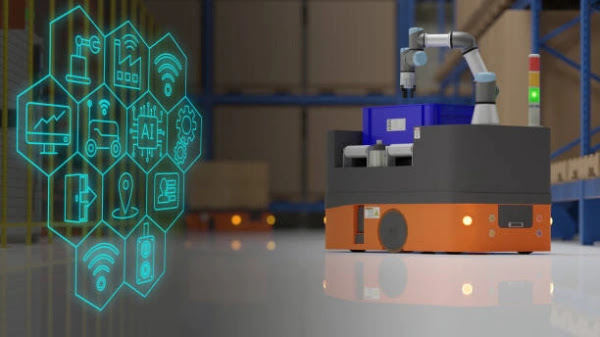Featured
- Get link
- X
- Other Apps
Smart Healthcare Technologies
Advancements in Smart Healthcare Technologies
Introduction
Smart healthcare technologies, driven by advances in
artificial intelligence, Internet of Things (IoT), and data analytics, are
revolutionizing the healthcare industry. These innovations enhance patient
care, improve clinical outcomes, streamline administrative processes, and optimize
resource utilization. This essay explores the latest advancements in smart
healthcare technologies, examining their impact on healthcare delivery, patient
experience, and overall system efficiency.
- Remote Patient Monitoring: Remote
patient monitoring (RPM) enables healthcare providers to monitor patients'
vital signs, symptoms, and medication adherence outside traditional
clinical settings, thereby enhancing care continuity and enabling early
intervention. Advanced wearable devices, such as smartwatches, biosensors,
and connected medical devices, continuously collect and transmit patient
data to healthcare professionals in real-time.
Artificial intelligence algorithms analyze this data to
detect anomalies, identify trends, and predict health deterioration, allowing
healthcare providers to intervene proactively. RPM is particularly beneficial
for managing chronic conditions, such as diabetes, hypertension, and heart
disease, by enabling timely adjustments to treatment plans and lifestyle
recommendations.
Furthermore, RPM reduces the need for frequent in-person
visits, thereby lowering healthcare costs, improving patient satisfaction, and
reducing the burden on healthcare facilities, especially during times of public
health crises like the COVID-19 pandemic.
- AI-Powered Diagnostics: Artificial
intelligence is transforming medical diagnostics by enabling more
accurate, efficient, and timely disease detection and diagnosis. Machine
learning algorithms trained on vast datasets of medical images, patient
records, and clinical outcomes can analyze radiological images, such as
X-rays, MRIs, and CT scans, with accuracy comparable to or even surpassing
that of human radiologists.
For example, AI algorithms can detect early signs of cancer,
identify abnormalities in medical imaging studies, and assist clinicians in
making more informed diagnostic decisions. AI-powered diagnostic tools have the
potential to reduce diagnostic errors, improve patient outcomes, and expedite
treatment initiation, particularly in areas with limited access to specialized
healthcare providers.
Moreover, AI-based diagnostic solutions hold promise for
enhancing screening programs, population health management, and disease
surveillance efforts, thereby facilitating early intervention and preventive
care strategies.
- Telemedicine and Virtual Care:
Telemedicine and virtual care technologies leverage digital communication
tools, such as video conferencing, mobile apps, and remote monitoring
devices, to deliver healthcare services remotely. These technologies
enable patients to consult with healthcare providers, receive medical
advice, and access specialist care from the comfort of their homes,
eliminating geographical barriers and improving healthcare accessibility.
The integration of AI into telemedicine platforms enhances
the quality and efficiency of virtual care delivery. AI-powered chatbots and
virtual assistants can triage patients, provide basic medical advice, and
schedule appointments based on symptom severity and urgency. Natural language
processing algorithms enable these virtual assistants to understand and respond
to patients' inquiries in real-time, enhancing the overall patient experience.
Furthermore, AI-driven decision support systems assist
healthcare providers during virtual consultations by providing evidence-based
treatment recommendations, clinical guidelines, and predictive analytics
insights. Telemedicine and virtual care have emerged as indispensable tools for
delivering healthcare services remotely, particularly in underserved rural
areas and during public health emergencies.
- Predictive Analytics and Population
Health Management: Predictive analytics, fueled by AI and big data
analytics, enables healthcare organizations to forecast disease outbreaks,
identify high-risk patient populations, and optimize resource allocation
and care delivery strategies. By analyzing large volumes of patient data,
including electronic health records, claims data, and socioeconomic
indicators, predictive analytics models can identify patterns, trends, and
risk factors associated with adverse health outcomes.
For example, predictive analytics algorithms can predict
readmission risk for hospitalized patients, identify individuals at risk of
developing chronic diseases, and stratify populations based on their healthcare
needs. This information enables healthcare providers to tailor interventions,
allocate resources efficiently, and implement preventive care strategies to
improve population health outcomes.
Moreover, population health management platforms equipped
with AI capabilities enable healthcare organizations to monitor key performance
indicators, track progress towards quality metrics, and identify opportunities
for quality improvement and cost savings. By leveraging predictive analytics
insights, healthcare organizations can optimize care coordination, enhance
patient engagement, and achieve better health outcomes at the population level.
Conclusion
In conclusion, advancements in smart healthcare technologies
are reshaping the future of healthcare delivery, improving patient outcomes,
and transforming the healthcare ecosystem. From remote patient monitoring to
AI-powered diagnostics, telemedicine, and predictive analytics, these
innovations hold promise for enhancing care quality, accessibility, and
efficiency. As technology continues to evolve and become more integrated into
healthcare workflows, smart healthcare technologies will play an increasingly
central role in driving innovation and improving healthcare outcomes globally.
- Get link
- X
- Other Apps


